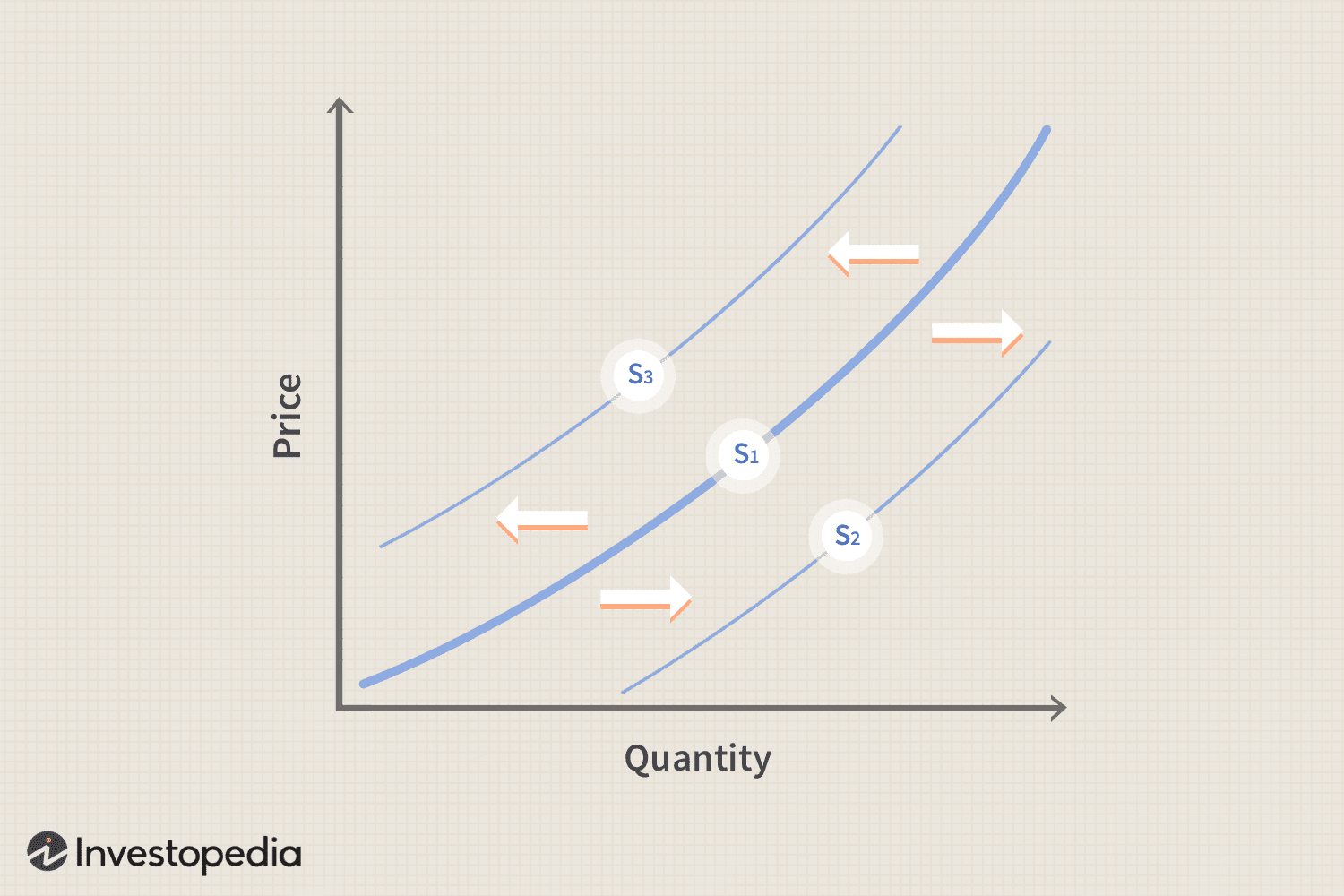
Law of Supply
Just like there’s no jelly without peanut butter, you can’t have demand without supply.
The supply curve models what producers are willing and able to produce at certain price points. The law of supply is this: at higher price points, producers are willing to supply a greater quantity.
Source: Investopedia
Like with demand, changes in QUANTITY SUPPLIED are solely determined by price. A change in supply means an actual shift of the curve, of which there are 5 main causes.
Let’s start with the easy stuff. First, technology. If a firm’s production is more efficient due to greater technology, it will produce a greater quantity at every price. Second, expectations. Producers always want to make sure that they have enough to meet projected demand – they don’t want to miss out on potential profit. During the holidays, for instance, supply often increases. Third, input costs. If the wood to make chairs gets more expensive, a chair producer will be able to supply less. Fourth, input quantity. Even if the wood doesn’t get more expensive, it can limit the chair producer’s supply if there is not enough wood in the world to make many chairs. Fifth, number of producers. More producers inherently means more supply.
The last determinant, prices of related goods, is tricky – people often confuse it with related goods of consumption. However, these are related goods in production. For producer complements, an increase in the price of one good increases the supply of the other good. These goods are usually produced in the same integrated process, which is why they complement each other; take beef and leather as an example. For producer substitutes, the price of one good increasing results in the supply of the other good decreasing. Wheat and corn, which can be grown by the same farmer on the same land, is a good example. There’s only so much land, so the producer has to pick the more profitable crop at the expense of the other one.
If you’re still shaky on supply and demand, this old video is helpful. Don’t worry about the equilibrium part just yet – we’ll get to that soon.
